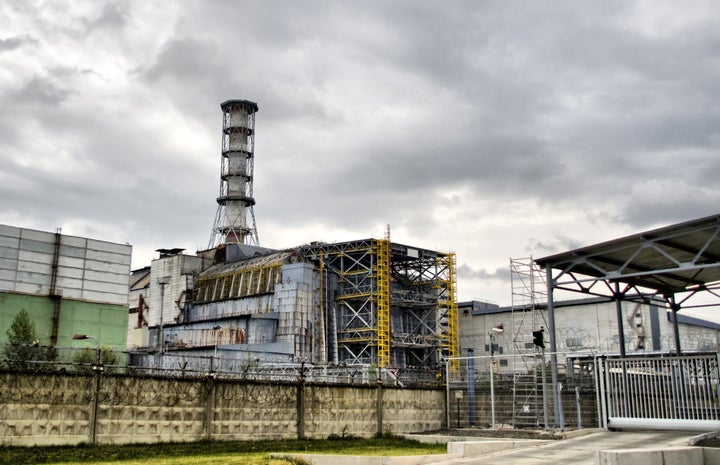
Some 200 million people around the world are increasingly threatened by toxic wastes such as lead, mercury, chromium and radioactivity according to a new report listing the ten most dangerous threats in the world.
Blacksmith Institute based in New York City and Green Cross Switzerland, two non-profit organizations dedicated to eliminating toxic waste threats, prepared the report based on on-the-ground investigations in 49 low- and middle-income countries from China to Chile.
The 2013 report is the eigth released by the groups and it follows up on previous Top Ten toxic sites to see if they have been cleaned up.
"This year's report takes a look at the progress made in dealing with some of the world's worst polluted places" said the report. "This examination of industries, pollutants, and sites is based on data collected by Green Cross Switzerland and Blacksmith Institute and on industry information, public sources, and the scientific literature."
In a telephone press conference to release their report Monday (Nov. 4, 2013), Blacksmith experts said that China and India, which both have huge pollution problems associated with rapid industrial growth, have decided to invest money in cleaning up their pollution.
The rapidly-expanding industrialization of the developing world has vastly increased threats from lead in car batteries, mercury in artisanal gold mining, chromium in tanneries, pesticides and nuclear wastes, said officals at Blacksmith which operates monitoring and cleanup projects in more than 40 countries.
Blacksmith experts increased the estimated number of people threatened by toxic pollution, from 125 million a year ago to 200 million today, based on increasing pollution as well as increasing discovery of waste sites.
This high and still growing number of people at risk of death and disability is "a public health threat equivalent to more highly publicized public health problems such as malaria and tuberculosis," the report said.
Some threats can easily be eliminated such as lead poisoning from Mexican pottery -- simply persuade potters to use lead-free glaze. Others can be reduced by collecting mercury vapor released in gold mining. And others will require large-scale investment to remove polluted soil and sediment, such as cleaning up nuclear materials from reactors in Chernobyl or Fukushima.
THE NEW TOP TEN FOR 2013
1. Agbogbloshie, in Accra, Ghana, is a vast site for recycling electronic wastes (e-wastes) such as computers and printers, largely imported from the West and set ablaze to remove copper and other metals.
The site is a hellish scene of black, toxic smoke that poisons thousands who work there or live nearby, and floats over the city's largest outdoor food market. Ghana annually imports around 215,000 tons of e-waste, expected to double by 2020. Lead levels at the site were as high as 18,125 parts per million -- the USEPA standard for lead in soil is 400 ppm.
2. Chernobyl, a Ukrainian nuclear power plant that melted down in 1986, released 100 times the radiation of the Hiroshima atom bomb, affecting 150,000 square kilometers in the path of the plume and leaving an uninhabitable 19 mile exclusion zone. The cement sarcophagus the Soviets built around the melted reactor is crumbling and is to be replaced in 2015. But five to 10 million people live nearby and can't be relocated.
3. The Citarum River Basin which supplies 80 percent of surface water to Indonesia's capital Jakarta, is contaminated with up to 1,000 times the lead allowed by the USEPA standards. Aluminum, manganese, and iron were also above acceptable levels. The government has negotiated a $500 million loan package with the Asian Development Bank as part of a $3.5 billion plan to restore the Citarum River Basin.
4. Dzershinsk, Russia, one of Soviet Russia's principal sites for chemical weapons, is still making chemicals. Between 1930 and 1998, an estimated 300,000 tons of chemical wastes were improperly landfilled in and around the city of 245,000 people. Water showed levels of dioxins and phenol thousands of times above recommended levels. The Guinness Book of World Records named it the most polluted city in the world. In 2006, life expectancy in Dzershinsk was 47 for women and 42 for men.
5. Hazaribagh, Bangladesh has dozens of tanneries releasing toxic wastes into the water supply to the capital Dhaka. Daily they dump 22,000 cubic liters of toxic waste, including cancer-causing hexavalent chromium -- the chemical investigated by Erin Brockovich in California that was the subject of a movie. The roughly 10,000 Bangladeshi workers and their families live next to contaminated streams, ponds, and canals.
6. Kabwe, the second largest city in Zambia, is contaminated by lead mining and smelting. A 2006 study found children's blood lead levels exceeded recommended levels by five to ten times due to contamination. Children who play in the soil and young men who do small-scale mining are most at risk.
The Zambian government is dealing with the issue thanks to $26 million from the World Bank and Nordic Development Fund.
7. Kalimantan, on the Indonesian portion of the island of Borneo, has small-scale gold mining, which is the support for 43,000 people. Most use mercury, which extracts gold from ore and is then burned off. The UN estimates that worldwide, this process each year releases more than 1,000 tons of mercury into the environment, 30 percent of all man-made mercury emissions. Mercury is a neurotoxin affecting local people directly through the air but also all of us through fish.
The Indonesian government signed the Minamata Convention on Mercury October 10 this year and supported Blacksmith Institute and a local NGO, Yayasan Tambuhak Sinta (YTS), to reduce mercury release and exposure.
8. The Matanza-Riachuelo River Basin in Buenos Aires, in Argentina has 15,000 industries releasing chemicals into the river. A 2008 report said that soil on the banks of the river contained high levels of zinc, lead, copper, nickel, and total chromium.
Some 12,000 of the people near the river basin live on land not fit for human habitation. They suffer from diarrheal diseases, respiratory diseases, and cancer. Water from wells near the Matanza- Riachuelo river basin was not safe for drinking due to contamination. However, a billion dollar World Bank-funded effort will focus on sanitation and industrial pollutant abatement.
9. The Niger River Delta in Nigeria has long seen oil spilled from production sites and pipelines, in part due to insecurity and ethnic conflict over recent years. Between 1976 and 2001 there were nearly 7,000 oil spills where most of the oil was never recovered. An average of 240,000 barrels of crude oil are spilled in the Niger delta every year due to mechanical failure, third party activity, and many unknown causes. The spills contaminated the surface and ground water, the air, and crops with hydrocarbons, including known carcinogens like polycyclic aromatic hydrocarbon.
10. Norilsk, Russia is an industrial city that held the world's largest heavy metals smelting complex until the early 2000s. Nearly 500 tons each of copper and nickel oxides and two million tons of sulfur dioxide are released annually into the air. Life expectancy for factory workers in Norilsk is 10 years below the Russian average. Some 130,000 local residents are exposed to particulates, sulfur dioxide, heavy metals, and phenols each day. Past studies have found elevated copper and nickel concentrations in soil nearly everywhere within a 60km radius of the city. This has led to increased levels of respiratory diseases and cancers of the lungs and digestive system.
Despite these Top Ten threats, some progress has been made in recent years to clean up sites. However, said one Blacksmith expert, some sites are too vast and require decades of work and billions of dollars to clean up.
Blacksmith is working with funding from the World Bank and other donors to apply low-cost engineering solutions so that gold miners can recycle mercury instead of releasing it into the air, and it is devising similar solutions to reduce pollution.
Ben Barber is a communications advisor to Blacksmith Institute.
